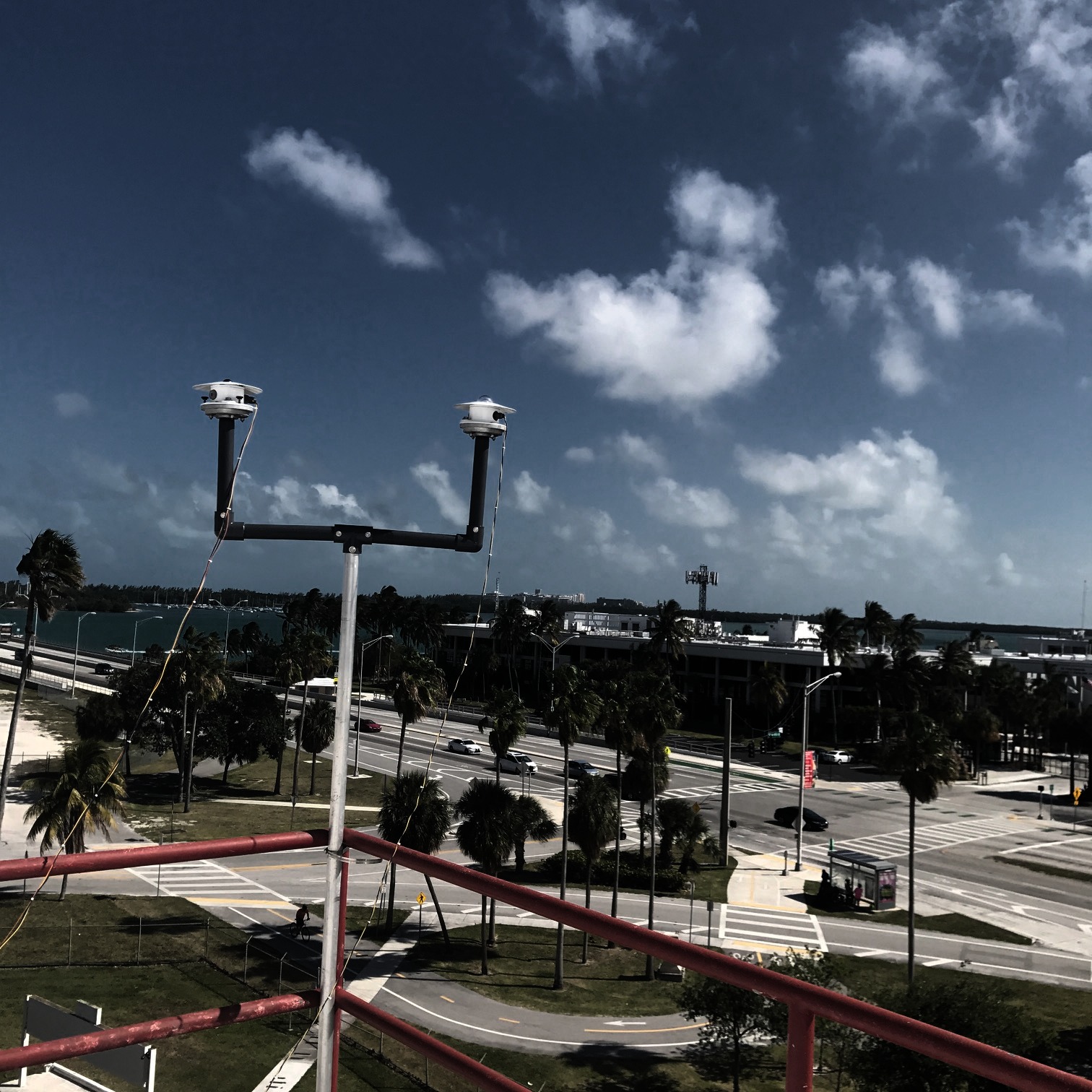Time Series of Surface Solar and Infrared Radiation
Gregory Foltz, Thomas Sevilla, Ulises Rivero
Solar and infrared radiation that reaches the surface of the earth provides energy to drive atmospheric and oceanic circulation and to sustain life. Understanding temporal variations of surface solar radiation (SSR) and infrared radiation and their connections to cloudiness and atmospheric aerosol concentrations are therefore a high priorities in climate research.
Previous studies have documented significant changes in SSR over land on timescales ranging from diurnal to multidecadal. Understanding the causes of these fluctuations is important for quantifying the surface radiation budget and its potential changes with global warming. Throughout the course of a day, cloudiness and rainfall varies according to the prevailing winds and their interaction with the local diurnally-driven monsoon flow (i.e., sea breezes and land breezes). On interannual timescales, South Florida is influenced by ENSO, with warm events in the equatorial Pacific (El Niño) tending to increase cloudiness and rainfall during boreal winter, and vice versa for cold events (La Niña). On decadal and longer timescales, changes in anthropogenic aerosols have been shown to play an important role. The SSR decreased between the mid 1900's and the early 1980's as aerosol pollution increased in North America and Europe and has since decreased as pollution has been reduced. Future changes in SSR in response to global warming will depend on changes in atmospheric circulation, temperature, and humidity, and anthropogenic aerosol emissions.
Given the importance of surface radiation for weather and climate, measurements of SSR and downward longwave (infrared) radiation are being acquired at AOML using an Eppley precision spectral pyranometer (PSP) and Precision Infrared Radiometer (PIR), respectively, mounted on the building's roof. The PSP measures wavelengths from 0.285 to 2.8 microns, including most of the solar spectrum, and the PIR measures in the range of 4 to 50 microns. Data are obtained at one-second intervals and averaged to one-minute means. The time series will be useful for assessing diurnal, seasonal, and interannual variations of surface radiation and their links to changes in cloudiness and aerosols.
Data Access: Coming soon.


Caption One-minute time-series of surface solar radiation